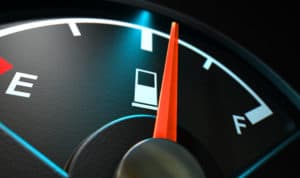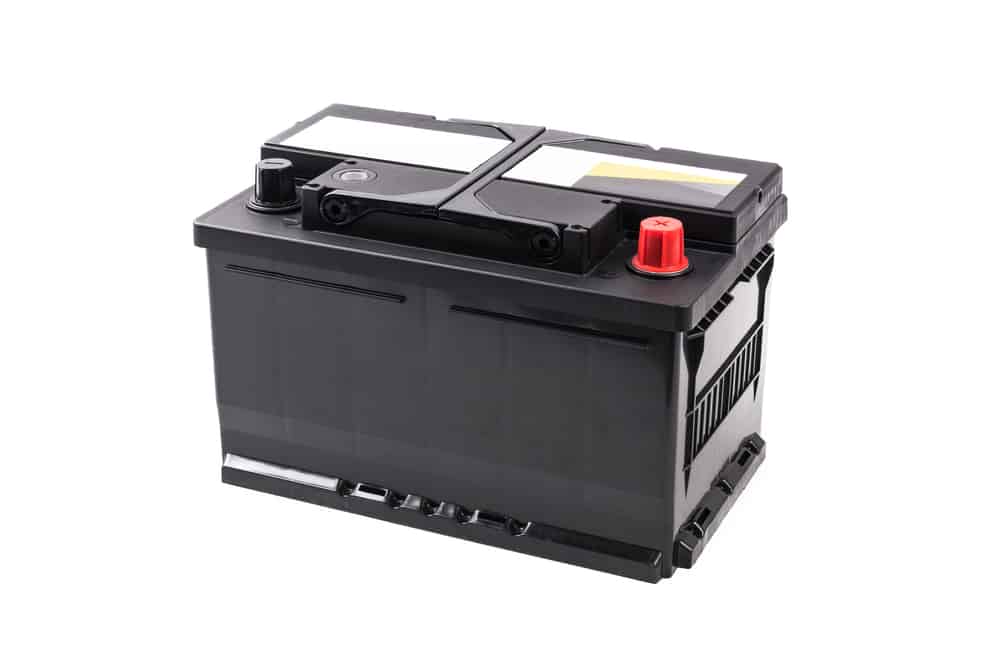
Although electric golf carts are becoming more and more popular throughout the world today, many people still use gas-powered options.
These carts have more power and often last longer than electric carts, depending on how well you maintain their engine and their overall design.
If you own one or are interested in buying one, you need to understand all of its parts.
And one of the most common parts that you’re likely to have to change or repair is the fuel pump.
This simple guide should help you out there.
How Does a Fuel Pump Work on a Golf Cart?

The Nature of a Fuel Pump
Before we go too deep into this subject, let’s pull back a little and take a look at the nature of a basic fuel pump.
Now, any fuel pump on any vehicle does precisely what its name implies – pumps fuel.
However, all fuel pumps are slightly different for a variety of reasons.
A fuel pump on a golf cart is, naturally, much smaller than that in a regular vehicle.
It also varies in a handful of other ways worth mentioning for those who have worked on cars.
Those who haven’t can read ahead.
First of all, a fuel pump on a golf cart is incredibly simple in its design.
This natural simplicity is inherent because it helps to make them easier to run without running into complications.
Golf carts, remember, are not sophisticated vehicles at their core.
However, they do have many running parts that you must understand before you start.
And while by no means a delicate piece to understand or fix, the fuel pump does require a broad understanding by those who plan on updating or repairing one.
The basic design of a golf cart fuel pump is that of a vacuum-powered pump that operates using pressure from your crankcase.
The crankcase helps to keep your gears running smoothly and provides your cart with a myriad of other benefits.
As the crankcase runs, it produces a pressure at the bottom of the piston of the cart.
This pressure is also known as a “pulse,” and must be balanced carefully to keep a golf cart running smoothly.
As this pressure builds, it produces a power that goes through the vacuum line of the engine and to the fuel pump.
At this point, the pump starts to operate.
A typical fuel pump has two nozzles on it that control your fuel flow – fuel-in and fuel-out.
These should be labeled on your pump and have hoses attached to them.
Some pumps use arrows to indicate what direction the fuel flows to simplify understanding even further.
However, there is also a third unmarked nozzle that connects to your vacuum line.
And that’s about it for your pump’s general exterior design.
The Basic Fuel Pump Operating Procedure
We touched on the basic design of the fuel pump in the previous section and hinted a little at how it works.
However, we’re going to go into more depth now to give you a fuller understanding of this essential cart part.
The information here should be detailed enough for most gear heads to appreciate but simple enough for the average person to understand.
You don’t have to know a lot about vacuum pressure or the design of the internal combustion engine to appreciate how this pump operates.
The last section outlined the exterior design of the pump, including the inlet, the outlet, and the vacuum line.
Now, we’re going to discuss the parts of the interior to give you a better feel for how it runs.
A typical fuel pump in a golf cart is designed with three chambers – an inlet, an outlet, and a pulse.
Each chamber has a diaphragm between them to help keep them separate.
In this way, your engine can run smoothly, and the pulse that you get from the crankshaft can run as smoothly as possible for your needs.
Now, as mentioned before, your engine’s pistons pump, they create pressure in the crankshaft.
This pressure is then transferred to the pulse of the pump.
Is everybody on the same wavelength here?
Good because the next few sections might be tricky.
As the pulse receives pressure, the diaphragms inside of the engine start to move in rhythm to the pulse.
In a certain strange way, your golf cart’s fuel pump is something like a dancer – they are full of rhythm that changes depending on how fast your engine is running and how much fuel that you need.
Now, as the diaphragm pulses, fuel is pulled into the inlet chamber from your gas tanks.
Then, the fuel will enter into the outlet chamber, where it passes to the rest of the engine.
In this way, a circle is created that produces an intriguing operation.
As you change your speed with the foot pedals, the engine’s pistols slow, reducing your need for fuel slightly and slowing your fuel pump.
But when you increase speed, the fuel pump pumps faster to provide more fuel.
There’s a little more to the design than that, but that should give you a good enough idea of what to expect before you begin any inspection.
Step-By-Step Guide

Now that you have a better understanding of how your pump operates, we decided it was a good idea to create a basic chart that shows you the exact step-by-step process in order.
Doing so should give you a handy guide to the rest of this article and give you stronger insight into your cart’s operation:
Step One – Press the foot pedal to dictate the speed of your engine
Step Two – Engine speed changes the pressure produced by the pistons
Step Three – Pressure from the cylinders is gathered by the crankcase
Step Four – Crankcase pressure passes through a vacuum line to fuel pump
Step Five – The “pulse” in the fuel pump causes vibrations in the pump diaphragms
Step Six – Diaphragms pull fuel into the inlet chamber
Step Seven – Diaphragms push fuel out into the engine
Step Eight – Process repeats, as needed, while you drive
Read through this section, if required, to better understand the operation of your pump.
You may even want to print it out and hang it up in your cart shed as a reference guide.
That’s because many common problems may impact how well your pump operates and which can be rather hard to manage without fully understanding every step of this part’s operation.
Common Problems That May Affect Your Fuel Pump
The simplicity of a golf cart fuel pump makes devastating problems with it rather rare.
That said, it is far from 100 percent safe from any issues.
As a result, it is smart to know what kind of problems may occur with your golf cart’s fuel pump.
The following sections will break down some of the most concerning and give you an idea of how to deal with them.
Pro tip: always call a mechanic if you are uncertain.
Problems With Fuel Breakdown
This issue is something you’ll probably notice if you let your golf cart sit too long.
Gasoline isn’t designed to sit indefinitely in an engine and can start to evaporate.
As a result, you can lose gas from your cart’s fuel pump even as it sits.
However, this problem is nowhere near as concern as oxidation.
This occurs when oxygen starts getting into your fuel system and causing the gas to thicken up.
The rather descriptive, if not technical, term that many mechanics use here is “gumming up.”
Your gasoline can end up turning into a brown gel that sticks in your pump and refuses to come out.
As a result, you may need to open up your pump very carefully and scrap out this residue.
Typically, you’ll need a screwdriver and a brush to perform this simple repair procedure.
Start by opening up the sides of the pump very carefully, making sure to keep the screws you remove in a safe place.
As you pull your pump sides apart, you’ll see the “gummed” and caked fuel throughout the pump’s mechanics.
Use your break to break it apart, if possible, and place it in a durable container.
Remember – this gunk is still gasoline and can be dangerous and even explosive.
As a result, you may want a mechanic to perform this step for you.
Dust and Dirt in the Engine
You probably keep your gasoline pretty clean in your golf cart.
Many people store their gas in sealed containers protected from the environment.
Others try to clean their cart’s engine regularly to avoid the potential for seriously dirty fuel.
However, this problem can occur and cause real damage to your pump.
For example, dirt can “gum up” your gasoline and cause it to become sludgy and hard to run.
And if you let it sit for too long, it can also thicken even further.
How does this dirt get in the engine?
Usually, when riding on dirt roads, fields, or across various types of areas.
Thankfully, your fuel filters should collect most of this dirt and make this problem less of an issue.
However, if you let your filters get too dirty, your pump is going to suffer.
As a result, you need to make sure to change your filters once every couple of months to keep them squeaky clean.
Ethanol Problems
Like most cart owners, you probably get your gasoline from a gas station.
That’s understandable – what works for your car works for your cart, right?
Well, yes and no.
Unfortunately, all gasoline sold at gas stations uses a small percentage of ethanol.
And ethanol attracts water which, if you let your golf cart sit too long, may end up in your fuel.
This water can spread rapidly throughout your cart’s fuel pump and cause rust and other long-term issues.
As a result, you need to make sure that you find gas that does not have ethanol.
You might be surprised to know that this type of gas is available.
Typically, you can find it at marinas – as boats usually run without ethanol gas – or at some home improvement stores.
Research your area to see which sells this gas and try to focus on using it instead.
Don’t worry, though – your cart’s engine can use ethanol gas if you can’t find any non-ethanol gasoline.
However, you must make sure that you use all of the gas before you store your cart.
If you haven’t, run the cart until it is entirely out of gas to ensure its engine and fuel pump are safe.
And if you want to be extra careful, contact a golf cart repair shop to have them draw fuel out of your engine even more.



Leave a Reply